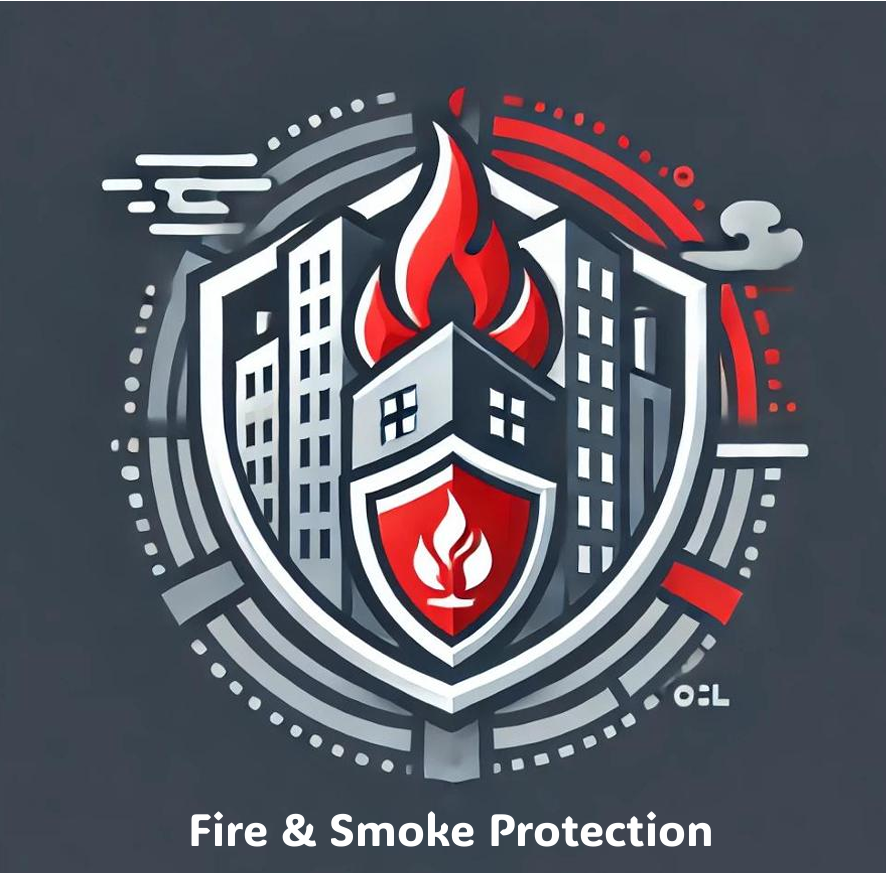| Fire-Resistance of Structural Elements | IBC 601, Table 601, Table 508.4
– Type I & II: 2-3 hours
– Type III, IV, V: 1-2 hours based on building size | BSL Articles 2, 27, 35
– Buildings ≥ 3 stories or ≥ 1,000 m² must be fireproof (耐火建築物) |
| Fire-Resistance of Interior Partitions | IBC 708.1, 508.4
– 1-hour fire partition required between different occupancies and incidental spaces | BSL Article 35
– Fireproof partitions required between office spaces and corridors |
| Fire-Resistance of Exterior Walls | IBC Table 602
– 0-10 ft separation: 1-3 hours
– 10-30 ft separation: 1 hour | BSL Articles 2, 27
– Fire-resistant exterior walls required in fire prevention districts |
| Automatic Sprinkler System | IBC 903.2.1.6
Required if:
– Fire area > 12,000 sq. ft. (1,115 m²)
– Located above/below exit discharge
– Laboratories using hazardous materials | BSL Article 17
Required if:
– Floor area > 500 m²
– Building height > 31 meters
– Laboratory or hazardous storage present |
| Smoke Control System | IBC 909
– Required for enclosed office spaces > 50,000 sq. ft. or with windowless areas | BSL Articles 17, 35
– Smoke control systems required for large office buildings and high-rise business complexes |
| Fire Alarm System | IBC 907.2.2
– Required if occupant load > 500 or if building has multiple tenants | BSL Article 17
– Required in all business buildings exceeding 31 meters |
| Manual Fire Alarm Pull Stations | IBC 907.2.2
– Required on each floor | BSL Article 17
– Required in high-rise and multi-tenant business buildings |
| Smoke Exhaust System | IBC 909.6,.8,.20
– Required for enclosed office spaces without natural ventilation | BSL Article 17
– Required in business buildings > 31 meters or with enclosed atriums |
| Fire Doors | IBC 716.2
– Required at exits & corridors | BSL Article 35
– Required in corridors > 20 meters long |
| Panic Hardware on Exit Doors | IBC 1010.1.10
– Required for doors with occupant load > 50 in assembly areas within offices | BSL Article 28
– Required in large offices and business centers |
| Fire-Retardant Interior Finishes | IBC Table 803.11
– Class A/B materials required | BSL Article 35
– Class A (難燃材料) required for walls and ceilings in high-rise offices |
| Emergency Lighting | IBC 1008.3
– Required for all egress routes | BSL Article 28
– Required in all business buildings |
| High-Rise Business Buildings | IBC 403
– > 75 ft (23 m) high requires:
– Fire command center
– Firefighter elevators
– Standby power | BSL Article 35
– > 31 meters must be 耐火建築物 (fireproof) with fire-resistant stairwells |


